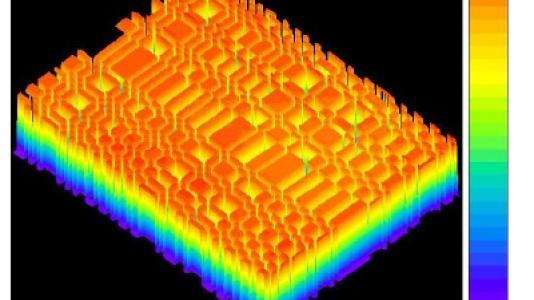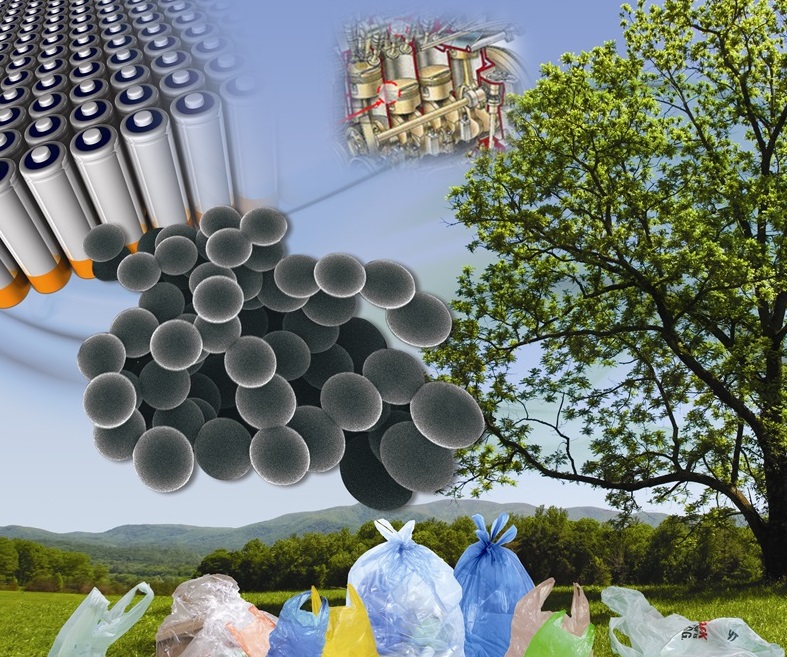
The awards, organized by R&D magazine, are given out annually at the R&D 100 Awards and Technology Conference in Las Vegas for the top technologies of the year. The awards are widely considered to be the “Oscars of Innovation,” a moniker originated by the Chicago Tribune. Argonne scientists have won 125 R&D 100 awards since they were first introduced in 1964.
This year’s winners that include researchers from Argonne are:
- Binary Pseudo-Random Calibration Tool: X-ray Science Division
- Versatile Hard Carbon Microspheres Made from Plastic Waste: Energy Systems Division and Chemical Sciences and Engineering Division
“Argonne is proud of its talented scientists and engineers who have been recognized by the R&D 100 Awards — they exemplify the innovative thinking that helps us fulfill our mission as a lab,” said Argonne Director Peter B. Littlewood. “We are pleased that the work of these researchers has resulted in inventions that break new ground in a range of fields.”
Binary Pseudo-Random Calibration Tool
This calibration tool provides the highest resolution ever achieved, 1.5 nanometers, and is used to characterize all advanced imaging systems from interferometers to electron microscopes. Metrology is a multibillion dollar industry that is an indispensable part of science and manufacturing. This new metrological technology can calibrate a broad range of optical instruments, including those used for extreme ultraviolet lithography and high-precision visible light optics. Metrology techniques are used in practically all branches of modern industry, including interferometric microscopes, scanning and transmission electron microscopes, X-ray microscopes, and atomic force microscopes.
Principal investigators are Valeriy V. Yashchuk, X-ray optics laboratory leader, Lawrence Berkeley National Laboratory; Ray Conley, optics fabrication section leader at Argonne; Peter Z. Takacs, Brookhaven National Laboratory; and Sergey Babin, President, ABeam Technologies, Inc.
Versatile Hard Carbon Microspheres Made from Plastic Waste
The inexpensive 2- to 5-micrometer hard carbon microspheres made from unsorted plastic waste are ideal for a wide range of high-value applications. The carbon microsphere manufacturing process completely destroys unwanted plastic waste in an environmentally responsible manner. The one-step, low-energy, solventless process produces carbon microspheres that can serve important tribological and advanced battery applications, in addition to having many other uses including inks, printer toners, and high-performance composites, ceramics, and polymers.
Principal investigators are Vilas G. Pol, lead investigator, associate professor at Purdue University, and former materials scientist at Argonne; Ali Erdemir, Argonne Distinguished Fellow; Michael M. Thackeray, Argonne Distinguished Fellow; and Kuldeep Mistry, principal product development engineer at the Timken Company and former Argonne postdoc.
Entries that included researchers from Argonne that were named finalists but did not win were:
- Highly Crystalline Pt3Ni Nanoframes with Three-Dimensional Electrocatalytic Surfaces: Materials Science Division
- Fluorinated Electrolyte Technology for High-Voltage Lithium-Ion Batteries: Chemical Sciences and Engineering Division
- Pulsed Thermal Imaging-Multilayer Analysis (PTI-MLA): Nuclear Engineering Division
- Virtual Community Platform (onVCP): Global Security Sciences Division
Highly Crystalline Pt3Ni Nanoframes with Three-Dimensional Electrocatalytic Surfaces
The team synthesized and tested a new, inexpensive catalyst that greatly enhances the critical reaction process in hydrogen fuel cells. The Pt3Ni nanoframes act as a catalyst that greatly enhances the activity of key reactions in hydrogen fuel cells and costs less than industry-standard catalysts. This synthesis of Pt3Ni nanoframes has made a significant impact in the fuel cell industry. In electrocatalyst performance tests, they exhibited a 36-fold enhancement in mass activity and 22-fold enhancement in specific activity compared with industry-standard platinum-carbon catalysts. Both enhancements are an order of magnitude higher than the DOE benchmark for 2017.
Principal investigators are Peidong Yang, materials scientist at Lawrence Berkeley National Laboratory; Vojislav Stamenkovic, Argonne physical chemist; Chen Chen, former Lawrence Berkeley postdoc; Nenad Markovic, Argonne Distinguished Fellow; Yijin Kang, former Argonne postdoc; and Nigel Becknell, Lawrence Berkeley National Laboratory.
Fluorinated Electrolyte Technology for High-Voltage Lithium-Ion Batteries
The fluorinated electrolyte is the only electrolyte capable of enabling high-voltage lithium-ion batteries for electric vehicles and other applications in areas such as advanced medical technology, aerospace, and the smart grid, all of which have high energy and high power density requirements. This electrolyte has several sought after characteristics, including high stability during the 4.5–5.0 V charging state, particularly with cathodes exhibiting high surface oxygen activity; high compatibility with strongly reducing anodes under high-voltage charging; high lithium salt solubility and ionic conductivity; nonflammability (no flash point) for improved battery safety; and excellent high-temperature (55°C) and low-temperature (–30°C) performance.
Principal investigators are Zhengcheng Zhang, lead investigator and Argonne senior chemist; Libo Hu, Argonne electrochemist; Chi Cheung Su, Argonne organic chemist; Lu Zhang, Argonne assistant materials scientist; and Zheng Xue, former Argonne organic chemist.
Pulsed Thermal Imaging-Multilayer Analysis
Pulsed thermal imaging-multilayer analysis nondestructively measures the thermal conductivity and thickness of each layer of a multilayer coating across the surface of a coated part. The technology enables data collection on multiple data points for multilayer thermal barrier coatings (TBCs) used in advanced power-generation and jet-airplane-propulsion gas turbines. This technology will allow researchers, manufacturers and turbine users to evaluate TBC quality throughout the life cycle of the parts for the first time, without causing damage to the TBCs being evaluated and possibly even without removing the parts from service.
The principal investigator is Jiangang Sun, Argonne mechanical engineer.
Virtual Community Platform (onVCP)
The Virtual Community Platform is an extensible platform that enables public- and private-sector emergency management professionals to communicate, collaborate, and coordinate within their community. It allows first responders to communicate faster and more efficiently by compiling and sharing vast amounts of external response data on a common operating picture.
Principal investigators are John Dactelides and William Christopher Metz, both Argonne software engineers.
Argonne National Laboratory seeks solutions to pressing national problems in science and technology. The nation’s first national laboratory, Argonne conducts leading-edge basic and applied scientific research in virtually every scientific discipline. Argonne researchers work closely with researchers from hundreds of companies, universities, and federal, state and municipal agencies to help them solve their specific problems, advance America’s scientific leadership and prepare the nation for a better future. With employees from more than 60 nations, Argonne is managed by UChicago Argonne, LLC for the U.S. Department of Energy’s Office of Science.
The U.S. Department of Energy’s Office of Science is the single largest supporter of basic research in the physical sciences in the United States and is working to address some of the most pressing challenges of our time. For more information, visit the Office of Science website.
